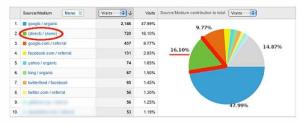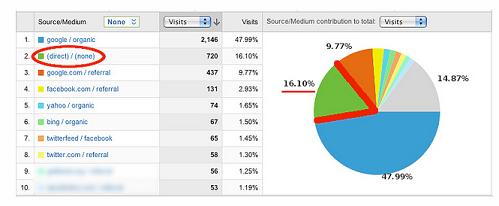My Social Media Analytics Takeaways from Internet Summit 2011
 A couple of weeks ago, I promised to write a few blog posts about what I learned at Internet Summit 2011. I covered Facebook Pages and search engine optimization (SEO) in my first two posts (before cutting out for a week of vacation). Social Media Analytics is the topic of my third and final #isum11 blog post.
A couple of weeks ago, I promised to write a few blog posts about what I learned at Internet Summit 2011. I covered Facebook Pages and search engine optimization (SEO) in my first two posts (before cutting out for a week of vacation). Social Media Analytics is the topic of my third and final #isum11 blog post.
Two big-picture takeaways from the “Measuring Social” speakers were:
- Before you begin any social media campaign, know your business objectives. Not your social media objectives, your business objectives.
- From the start of the campaign, have a consistent, streamlined way to measure how you are meeting, missing or exceeding your pre-defined social media expectations.
John Lovett (@johnlovett), senior partner at Web Analytics Demystified and author of Social Media Metrics Secrets, gave an excellent presentation on “Ten Tips for Paving Your Social Media Analytics Roadmap.” He talked about creating a roadmap, establishing proper expectations, documenting your journey and assessing your progress.
Two of his social media analytics points that really stood out to me were:
- Skip the vanity metrics (e.g., fans, followers, likes and dislikes). This point might surprise small business owners who are trying to manage their social media campaigns on their own, perhaps feeling pretty darn proud of themselves when they reach 300 fans on Facebook or 1,000 followers on Twitter. You might be excited about these milestones, but how are you interacting and engaging these fans and followers to drive sales? There are much more meaningful metrics that you should track and analyze.
- Plan for desired outcomes – When you start to gain more exposure through social media and you’re kicking off more and more conversations and interactions, what do you want to happen next? How will you allow or encourage these interactions to improve your products and services?
Adam Covati (@adamcovati), founder and chief technology officer of Argyle Social, gave a great presentation entitled, “Managing, Measuring and Monetizing Social Media.” He had some solid tips for getting started with consistent, simple measurements:
- Start simple with a bitly.com account.
- Add Google Analytics parameters on links.
- Use tracked links everywhere.
- Begin marrying data sources.
These steps will start measuring your social media activity. However, according to Adam, this approach will not accurately report social media’s total impact on your business.
For example, Google Analytics will attribute social media for a conversion that comes immediately and directly from a link on a social media site. Argyle Social’s software tracks social media interactions over a period of time and gives a more in-depth report of conversions that were “socially influenced.” For more information on the difference between the beginner tips listed above and much more advanced social media analytics possibilities, you might want to check out Argyle Social’s whitepaper entitled, “A Primer on Social Media Attribution & ROI.”
Well, I said it in 2010 and the (in)frequency of my blog posts proves it, “Kelly Duffort is not a Blogger.” It’s just that I learn so much from all the great speakers at the Internet Summit each year that I thought it would be fun to pull together a few posts. Whenever I can’t attend an event and instead, learn from people who are so kind to blog about it, I’m very, very grateful. If you couldn’t make it to Internet Summit 2011 or missed this particular session, this blog post is for you.
So…until next year’s Internet Summit or whenever the blogging bug first bites me in 2012, farewell!
